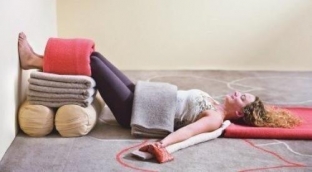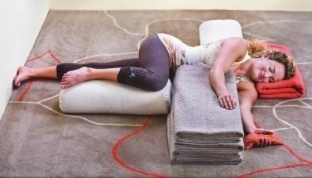What is the person most afraid of? Pain and stress, scientists say almost unanimously. The human body cannot tolerate pain. As for stress, this feeling can accompany a person for a very long time, delivering incredible discomfort. What is stress in general, what do we mean by this word? Experience, emotional stress, fear – And these are not all signs of stress. Not everyone can stay in a sober mind, adequately respond to what is happening and not lose composure when stress begins.
New situation, impressions, extreme conditions, change in temperature – and the body experiences stress, which gives impetus to the process of adaptation in order to adapt to new living conditions. There are a lot of ways to relieve nervous tension and calm down, look at the situation soberly and see the path that is worth going, there are a lot: from meditative techniques to special physical exercises.
What is stress – understand the concepts
Man experiences stress from the first minutes of his appearance as a biological species. But the word for this feeling was invented relatively recently, the authorship of the term "stress" belongs to the scientist Walter Cannon, after whom Hans Selye, a Canadian scientist, studied this term and the concept.Selye generalizes the term and calls it the body's normal and natural response to an irritant signal that triggers feelings of anxiety and discomfort. That is, when a person leaves the comfort zone and feels that something is wrong around, stress begins. Everyone understands this term in their own way, which makes it difficult for scientists to define this concept.

How distress works: when an unresolved situation occurs, unfamiliar to consciousness, a person cannot understand how to act, what to do, and the situation remains at the level of a question, heating up tension in the body, even when the irritant has already disappeared, and anxiety and the discomfort remains.
During stress, although a person feels fear, horror, discomfort, he does not lose the opportunity to find a way out of the situation in order to adapt, learn, survive and decide to live by the new rules.
Coaches and masters in psychology say that it is possible and necessary to get rid of stress. But is it really possible to do this, once and for all? What is a person deprived of the opportunity to experience stress? It's like situations when a person stops feeling pain in one place on the body, or in the whole body – hereditary sensory neuropathy – such a disease leads to numerous health problems. The same happens with stress, without it a person will not be able to move on, develop and find solutions to problems, but will simply live with these problems and remain at the level that he was, gradually degrading. Why did man start building his own dwelling? To get rid of the worry about the onset of cold weather, he looked for solutions to the problem in order to save his life in the cold season.<
Stress – it is not only emotions, the body feels it both on a spiritual, emotional, and physical level. When animals experience stress, they get rid of it when the irritating factor disappears. A person, as a rational being, carries stress in himself until an external factor makes changes in a person, changes the idea and understanding of the world and his body. Only then the stress disappears when the changes in consciousness have taken effect, that is, the person has got used to, adapted to the situation, solved the problem.
How to relieve tension by doing restorative yoga asanas
To help stress make changes, a person should draw conclusions, get rid of anxiety, in order to regain former sobriety and clarity, the body should be helped. And the best way is restorative yoga, the exercises of which do not require special skills and abilities. Restorative yoga will answer the question of how to release tension and reduce stress through meditation.
Restorative yoga is a passive practice where the body is held in a relaxed state for several minutes during the postures so that one can go deeper into the mind and find peace. To perform poses, additional tools are used – blankets, rollers, blocks – to achieve maximum relaxation and relieve tension from the muscles, freeing the body and thoughts from heaviness and stiffness.
Basic Restorative Yoga Postures
1. Bent Candle Pose or Viparita Karani
It is necessary to lie on your back, bend your legs at the knees, put blankets or a roller under your calves and feet, cover your legs with a blanket. Rest your feet against the wall, place a blanket under your pelvis. Relax your hands, in the palm of your hand take a towel or a rectangular bag. Pay attention to the convenience of the posture, if the back or shoulders are still in tension, put a blanket under them as well. The head must also be supported. Concentrate on your breath. As you exhale, feel your body in full control of the muscles. While inhaling, try to expand the ribs in all directions, filling the chest with air as much as possible. Stay in the Bent Candle position for at least 15 minutes.
 2. Child Pose (with support) or Salamba Balasana
2. Child Pose (with support) or Salamba Balasana
Place a brick next to you, place a blanket or a roller on it. Lower yourself into a child's position, not completely leaning on the support (brick with blankets), resting more on your legs. Embrace a blanket or a roller on a brick with your hands. Place blankets under your forearms and arms so that you are comfortable in this position. Place another blanket on the sacrum. Turn your head in any convenient direction. Place your legs under you so that your knees move apart, with your heels touching your buttocks. As you inhale, feel the back of your body open up; as you exhale, feel the support under your belly and chest. Stays in the pose for up to 15 minutes, concentrating on the breath.
 3. Bound Angle Pose or Supta Baddha Konasana
3. Bound Angle Pose or Supta Baddha Konasana
Place a brick and a cushion or blanket on top. Sit near the roller, with your back to it. Place another roller under your knees – connect the feet, spread the knees to the sides. Wrap your feet and pelvis with a blanket. Get down on the roller so that your neck is supported, place a blanket under your back and head. Also place supports under your arms so that they do not hang down. Stay in the pose for 15 minutes.
 4. Dead man's pose on the side or Savasana lying on the side
4. Dead man's pose on the side or Savasana lying on the side
Take position – Lying on your left side, place your feet on the wall. Place a roller under the back surface of the body, bend your right leg at the knee and place a support under it – roller The foot of the left foot rests against the wall. Roll up the blankets and place under the upper arm, head and neck. The arms should remain straight. In the pose is 5 minutes.
 5. Dead Man Pose or Savasana
5. Dead Man Pose or Savasana
Place the assembled blanket at the base of the wall. Lie on your back with your feet resting on the blanket. Place a rolled-up blanket under your knees, or better a roller. Wrap your belly with a folded blanket. Stretch your arms so that they are placed along the body, palms down. Place a small, gathered towel under your neck and a blanket under your head. Breathe and feel connected to Earth and Sky. Relax your mind, let go of thoughts, think only of your breath. Stay in the pose for 5 minutes.
 Restorative yoga knows exactly how to relieve stress and relax, turn the flow of energy in the right direction.
Restorative yoga knows exactly how to relieve stress and relax, turn the flow of energy in the right direction.





